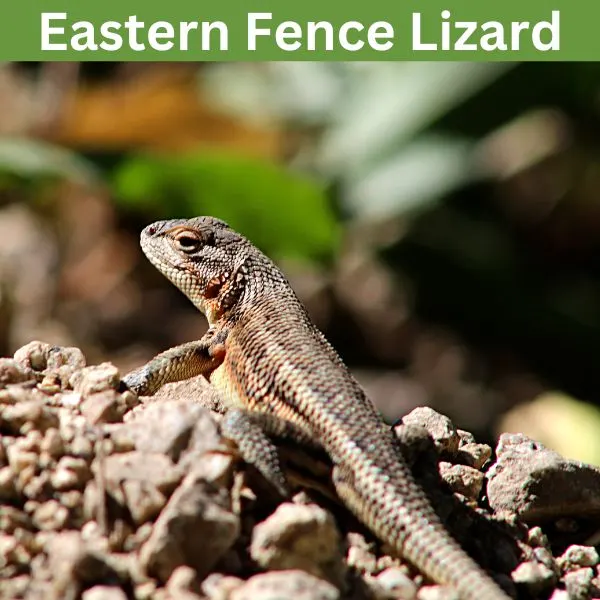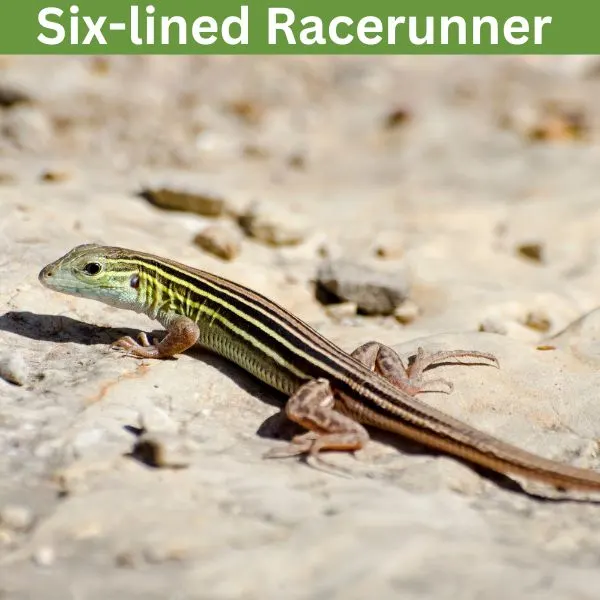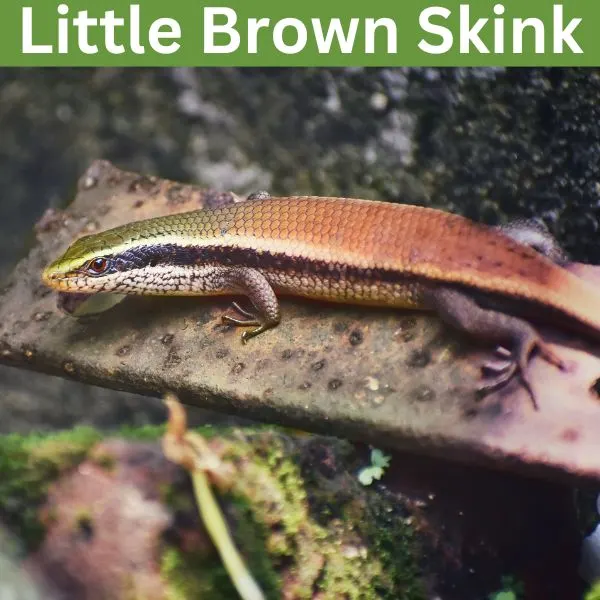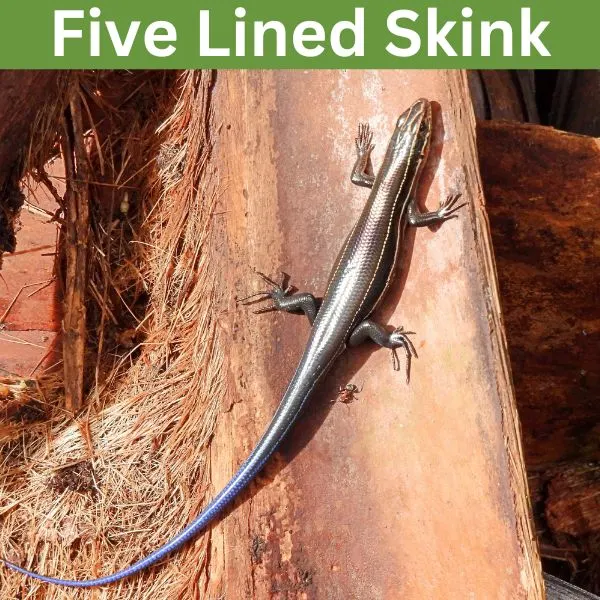In West Virginia there are 6 lizard species that live in the state. Lizards are just one type of animal in West Virginia, as the state has around 87 species of reptiles, and amphibians you may find in the wild. Woodlands, wetlands, and grasslands are just a few of the habitats in West Virginia, which house the myriad of animals in the state.
Lizards are one of the most diverse reptiles, with more than 7,000 species that live around the world. While there are only 6 lizard species that inhabit West Virginia, there is a lot to learn about them.
The size, color, scales, and behavior of lizards are some of the differences between them, which are all useful things to know in identifying a species. Let’s take a look at the 6 lizards that live in West Virginia, and the useful facts you should know about them.
Table of Contents
Lizards in West Virginia
1. Eastern Fence Lizard

- Experience Level: Intermediate
- Family: Phrynosomatidae
- Scientific Name: Sceloporus undulatus
- Other Names: Northern fence lizard, gravid lizard, pine lizard
- Adult Size: 4 to 6 inches (10.16 to 15.24 cm.)
- Lifespan: 5 to 7 years
- Average Price Range: $20
The eastern fence lizard is a very common species in West Virginia, and is a lizard native to the eastern United States. The scales of these lizards are very keeled. Their gray to tan coloring allows them to blend into surfaces like trees. Medium in size, during the day this lizard is active.
Males and females of this species slightly differ, with the boys having blue coloring on their sides, with girl eastern fence lizards having black marks on them. The males’ bright color helps signal to mates during the breeding season. The spring to fall is when these lizards are more active, and spend their day breeding, laying between 3 to 16 eggs.
Eastern fence lizards are very common, and while found all across West Virginia, they have a stable population. Insects, and arthropods make up the majority of this lizard’s diet. In the breeding season females may eat more, and the heavier they are the more eggs they may lay.
2. Six-lined Racerunner

- Experience Level: Intermediate
- Family: Teiidae
- Scientific Name: Aspidoscelis sexlineata
- Other Names: Sandlapper lizard
- Adult Size: 6 to 9.5 in. (15 to 24 cm.)
- Lifespan: 4 to 5 years
- Average Price Range: $30
In West Virginia the six-lined racerunner is not very common in the state. Populations of this lizard have only been seen in the state within the rocky border near Maryland. These lizards have 6 yellowish stripes that run down their body, with an olive, brown, or black shade.
Six-lined racerunners breed in the spring and summer. They lay up to 2 clutches per year. Their eggs are laid in moist, secluded areas, and hatch in around 2 months. These lizards are very rare in West Virginia, but are common across the southeastern United States.
Six-lined racerunners are very fast, and capable of running up to 18 mph (28.9 kph). They use their speed to eat insects like grasshoppers, spiders, and moths. Their speed, and ability to hide also helps them outlive predators like hawks.
3. Coal Skink
- Experience Level: Intermediate
- Family: Scincidae
- Scientific Name: Plestiodon anthracinus
- Other Names: n/a
- Adult Size: 5.1 to 7.1 in. (13 to 18 cm.)
- Lifespan: 6 years
- Average Price Range: n/a
The coal skink is one of the three skink species that lives in West Virginia. These lizards have a gray, tan, or olive color. When young they may have a blue tail, which fades with age. Dark stripes run down their sides, and they have small, smooth scales.
Coal skinks breed in the spring, and summer months, and lay around 8 eggs. The leaf litter, or in other types of natural debris is where this lizard may hide if startled, or resting.
Insects, spiders, and other types of invertebrates make up the food of the coal skink. Due to their size they are a common species to be preyed on by other larger lizards, birds, or rats. In West Virginia these coal skinks inhabit the majority of the state, but are absent up north.
4. Little Brown Skink

- Experience Level: Beginner
- Family: Scincidae
- Scientific Name: Scincella lateralis
- Other Names: Ground Skink, Brown-backed Skink
- Adult Size: 3 to 5.25 in. (7.62 to 13.3 cm.)
- Lifespan: 2.5 years
- Average Price Range: $5
Little brown skinks are native to the southeastern United States, and are found in the far western portion of West Virginia. These lizards are very small, but slender. Their limbs are tiny, but their tail could grow long. Little brown skinks get their name from their coppery to tan color. A dark stripe runs down their sides, and a dark specks pattern is painted on them.
These lizards are found in woodlands, and moist habitats next to water sources like streams, or ponds. They are fossorial, and live in leaf litter, or loose soil. In some areas they are seeing a loss in population due to habitat destruction.
Little brown skinks feed on small insects, they find worms, slugs, and even beetles. Their size makes them vulnerable to predators like larger lizards, snakes, or birds. Little brown skinks are very secretive, and also hide under rocks, or logs.
5. Broad-headed Skink

- Experience Level: Intermediate
- Family: Scincidae
- Scientific Name: Plestiodon laticeps
- Other Names: Broadhead Skink, Red-headed Scorpion
- Adult Size: 5.9 to 13 in. (15 to 33 cm.)
- Lifespan: 4 to 8 years
- Average Price Range: n/a
Broad-headed skinks are native to West Virginia, and are found in woodlands, swamps, and other habitats with lots of trees. They are one of the largest lizards in West Virginia, and males can have a bright red head. The color of this lizard ranges from tan, olive, gray, or black. Females or juveniles may have blue tails, and stripes on them.
This lizard is found on the ground, but also in trees. They breed in the spring, and lay up to 22 eggs. Broad-headed skinks lay their eggs in moist, and dark environments and females will guard their young until they hatch.
Broad-headed skinks are common in the southeastern United States, and are sighted in western West Virginia. These lizards are able to feed on insects, and even smaller vertebrates.
6. Common Five-lined Skink

- Experience Level: Intermediate
- Family: Scincidae
- Scientific Name: Plestiodon fasciatus
- Other Names: N/A
- Adult Size: 4.9 to 8.5 in. (12.5 to 21.5 cm)
- Lifespan: 6 years
- Average Price Range: $12
Common five-lined skinks are native to the eastern United States, and can be found across West Virginia. Moist, and woodland environments are often where these lizards live. They are common near water sources like streams, or river edges.
The five yellowish lines that run down this lizard’s back is how they got their name. Their color ranges from olive, tan, or black. Like other skinks when born they have a bright blue tail when born, which is thought to direct predators to attack their limb that can detach.
The spring and summer is when this skink breeds, and males may have red coloring around their face in this season. Five-lined skinks lay around 15 eggs, placing them in places like rotting logs, or burrows. They feed on insects, frogs, mice, and fruit. These lizards have a stable population, but are often preyed on by animals like birds, or snakes.
What is the most common lizard in West Virginia?
Eastern fence lizards and skinks are the most common lizards in West Virginia. Lizards may not be seen often due to their camouflage, and tendency to hide, but if you know where to look you may see them more often.
When are lizards active in West Virginia?
The months from spring to fall are when lizards are most active in West Virginia. In winter the cold causes reptiles to brumate. Lizards depending on the species may prefer to be active in the day, or night.
Wrapping up
Lizards in West Virginia are important, since they feed on various pest insects, and help keep the ecosystem balanced. You may not even know lizards are near you, since they often hide, and are easily startled. Near homes some of the places lizards live are in burrows, under rocks, or they can even squeeze under your house.
While we typically only think about large animals impacting the environment, there is a much smaller ecosystem of insects, and smaller animals that lizards are the dominant animals of. Reptiles are very important, but each species requires specific habitats to live in.
Maintaining the environment that current lizards inhabit is important, since it can be difficult to revive a suitable habitat if their home is destroyed. Pollution, habitat fragmentation, and climate change are what can negatively impact a lizards population. The more we learn about the species around us the better equipped we are to protect them.
Lizards in other nearby states
